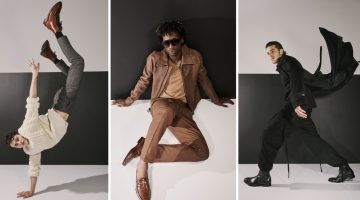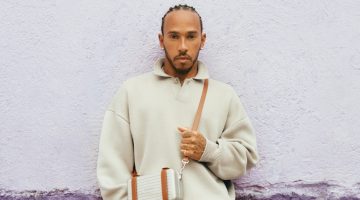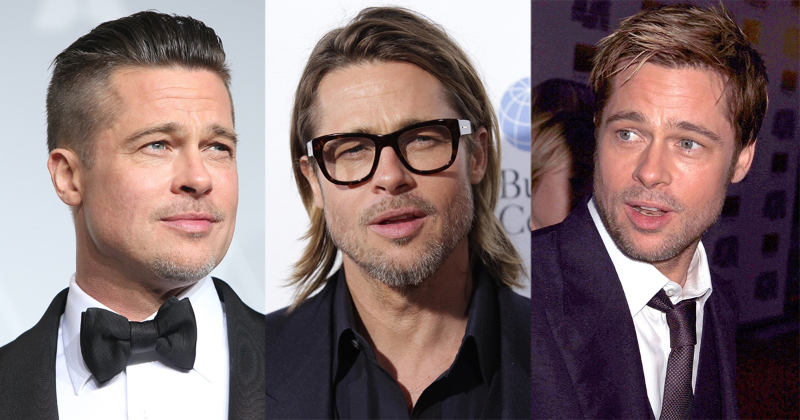
Brad Pitt, a name synonymous with Hollywood allure and transformative roles, has not only captivated audiences with his acting prowess but also with his ever-changing hairstyles. From his flowing locks of the early ’90s to his short and choppy Fight Club hairstyle, Brad Pitt’s haircut at any given time has become a character in its own right, contributing to the man’s narrative and the roles he inhabits.
Brad Pitt’s Haircut Evolution
From the untamed tresses of his early career to the meticulously styled cuts of recent years, Brad Pitt’s hair has been as much a part of his legacy as his film roles. Each style has marked a chapter in his illustrious career and set trends in men’s fashion.
The following exploration offers a lens into the actor’s life, told through the story of his iconic hairstyles:
The Early Years: Brad Pitt’s Long Hair in the 90s
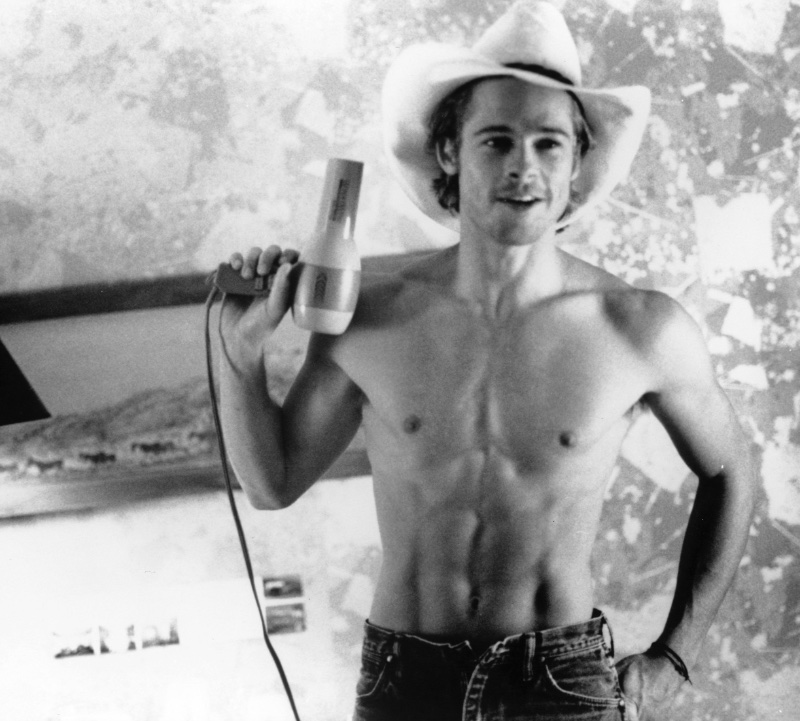
Before becoming the global sensation he is today, Brad Pitt navigated the Hollywood scene with roles in television shows like Dallas and Growing Pains. Originating from Springfield, Missouri, Pitt’s journey to Los Angeles in the mid-1980s was marked by these more minor roles, which, although not as iconic as his later work, were instrumental in shaping his early career.
His breakout role as J.D., the charming drifter in the 1991 road movie Thelma & Louise, showcased his medium-length dirty blonde locks. The memorable scene where he sports a cowboy hat and a shirtless appearance solidified the then 26-year-old as a symbol of the carefree rebel heartthrob, heralding the onset of his meteoric rise in Hollywood.
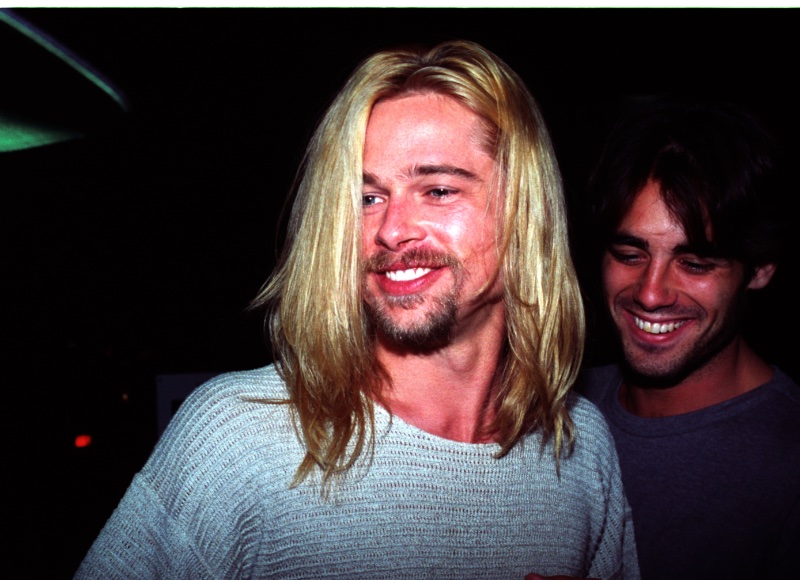
In the early 1990s, as Pitt transitioned to more extended roles and eventually embraced long hair, his evolving look captured the rebellious spirit of the grunge era. This wasn’t just about aesthetics; it mirrored the roles he chose and the characters he embodied.
Amidst the Hollywood landscape dominated by the Brat Pack and a burgeoning indie film movement, Pitt’s choices were distinctive. While actors like Tom Cruise championed the clean-cut image and Johnny Depp delved into more eccentric roles, Pitt’s characters, often with long hair, resonated with a raw, rebellious spirit.
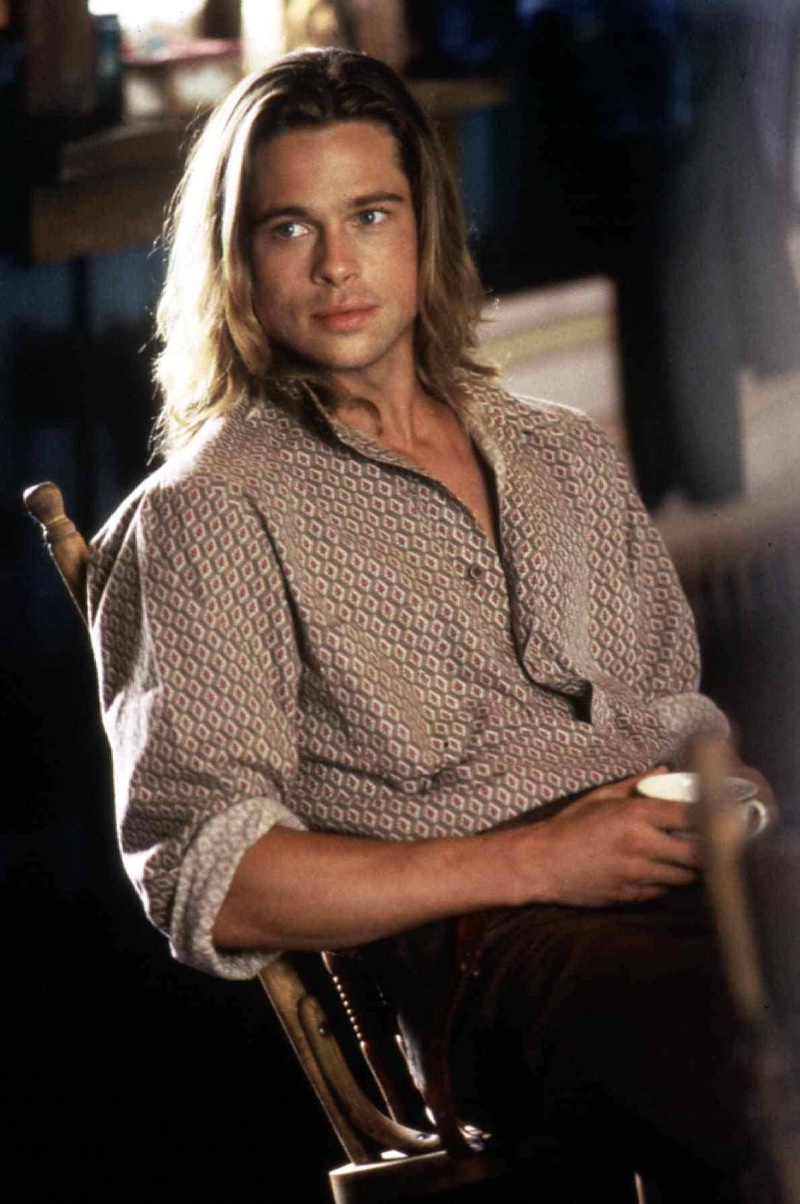
This essence was particularly palpable in his 1994 films Interview with the Vampire and Legends of the Fall. Especially in the latter, as Tristan Ludlow, his wild, flowing mane symbolized the American frontier’s untamed spirit.
During this period, Pitt’s style and roles didn’t just highlight his versatility as an actor; they also set fashion and cinematic trends. His influence was evident in men’s fashion and among his peers in the industry.
As Pitt transitioned from historical epics to gritty dramas, his ’90s persona, epitomized by roles like that in Kalifornia, marked the emergence of an actor who would shape men’s fashion and cinematic narratives and inspire fellow actors to pursue roles with depth and complexity for years to come.
The Transitional Phase: Seven & Meet Joe Black
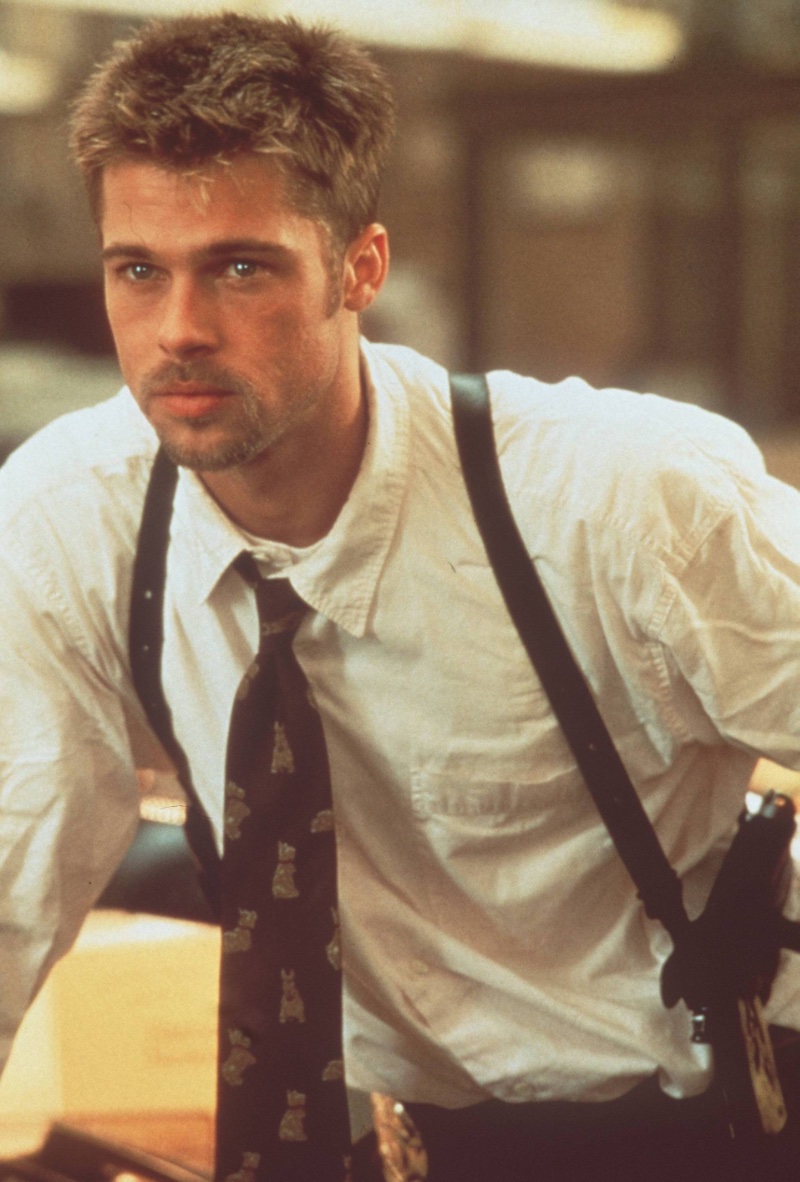
Between the grunge-inspired looks of the early ’90s and the radical transformation for Fight Club, Brad Pitt’s hair underwent notable changes that mirrored his cinematic choices. Two films from this period, Seven and Meet Joe Black, showcased these transitions.
In 1995’s Seven, Pitt played the role of Detective David Mills, a young and eager detective thrown into a grim world of heinous crimes. His hair, shorter and more controlled than in his earlier roles, reflected the character’s earnestness and determination.
The neat yet slightly tousled look departed from the wilder styles of the early ’90s, signaling a shift towards more mature and grounded roles.
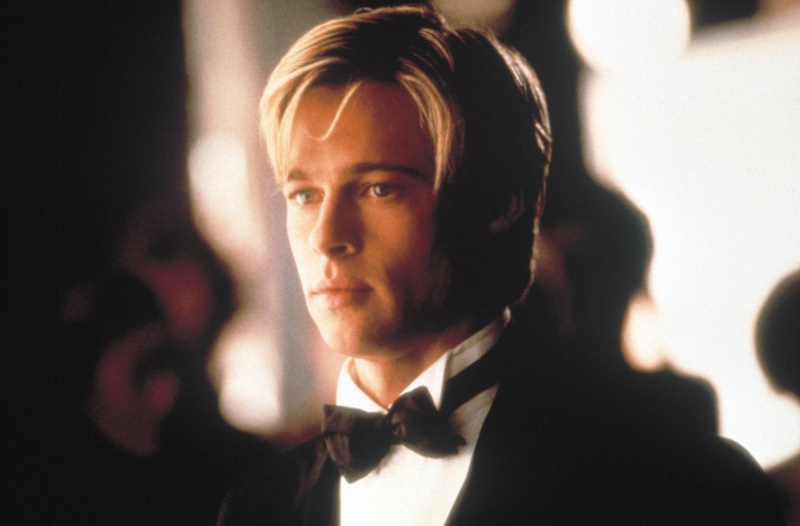
By Meet Joe Black’s release in 1998, Pitt had again transformed. Portraying the character of Death, who takes on a human form to learn about life, his hair evolved into a curtain haircut, characterized by its center parting and how it framed his face. The trendy hairstyle was accentuated by subtle highlights, adding depth and a sun-kissed touch to his look.
These two films and the accompanying hairstyles bridged the gap between Pitt’s early-career rebelliousness and the edgier, more avant-garde roles that would follow in movies like Fight Club. They showcased an actor in transition in terms of style and substance as he continued to explore and redefine his cinematic identity.
The Fight Club Haircut: Brad Pitt’s Spiky Hair

Brad Pitt’s portrayal of Tyler Durden in 1999’s Fight Club showcased a distinctive spiky, disheveled haircut. This hairstyle wasn’t just for aesthetics; it symbolized Durden’s rebellious attitude and rejection of societal norms. Like Durden, the hair stood for chaos, defiance, and individuality.
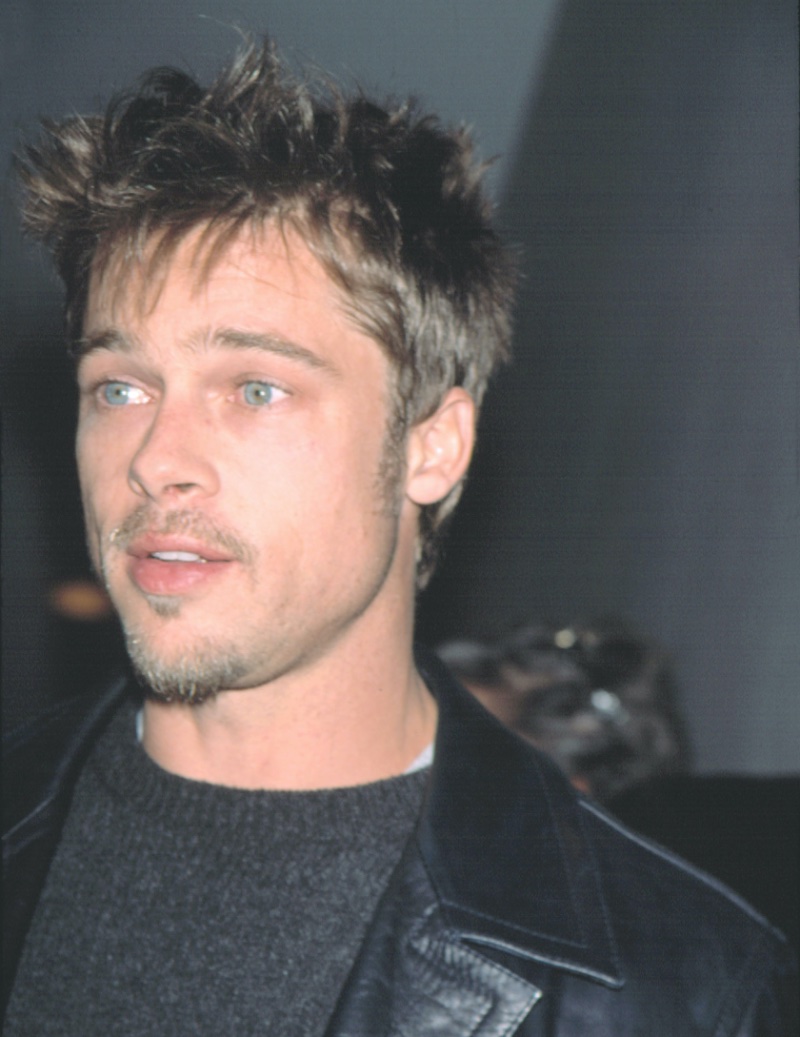
The hairstyle in Fight Club did more than complement the character; it became an integral part of him. Tyler Durden symbolized revolt against a system that numbed individuality, and his hair was a visual cue of this defiance. It was messy, chaotic, and unapologetically different—much like the character himself.
The cultural impact of this look was immediate and far-reaching. Men started flocking to barber shops, photos of Tyler Durden in hand, seeking to emulate the look that captivated audiences.
Epic Hair Transformations: Snatch, Troy & More
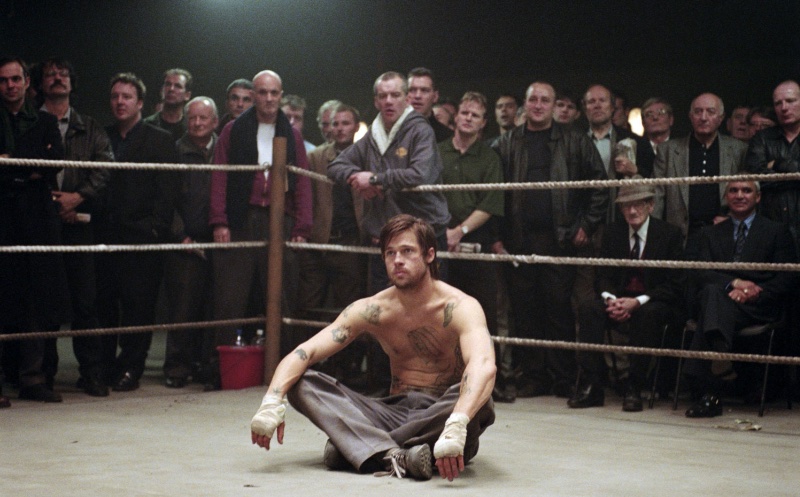
Brad Pitt’s versatility as an actor is further emphasized through his chameleon-like ability to adapt his hairstyle to the varied characters he portrays. From the gritty underworld of Snatch to the sunlit battlefields of Troy and the aging backward odyssey in The Curious Case of Benjamin Button, Pitt’s hair was always a focal point.
In 2000’s Snatch, Pitt fully embraced the role of the fast-talking, hard-hitting Pikey boxer Mickey O’Neil. His distinct accent added depth to the character. His hair, short, oily, and messy, combined with a rugged scruff, gave him a raw, street-savvy appearance that perfectly captured the rough-around-the-edges persona of Mickey.
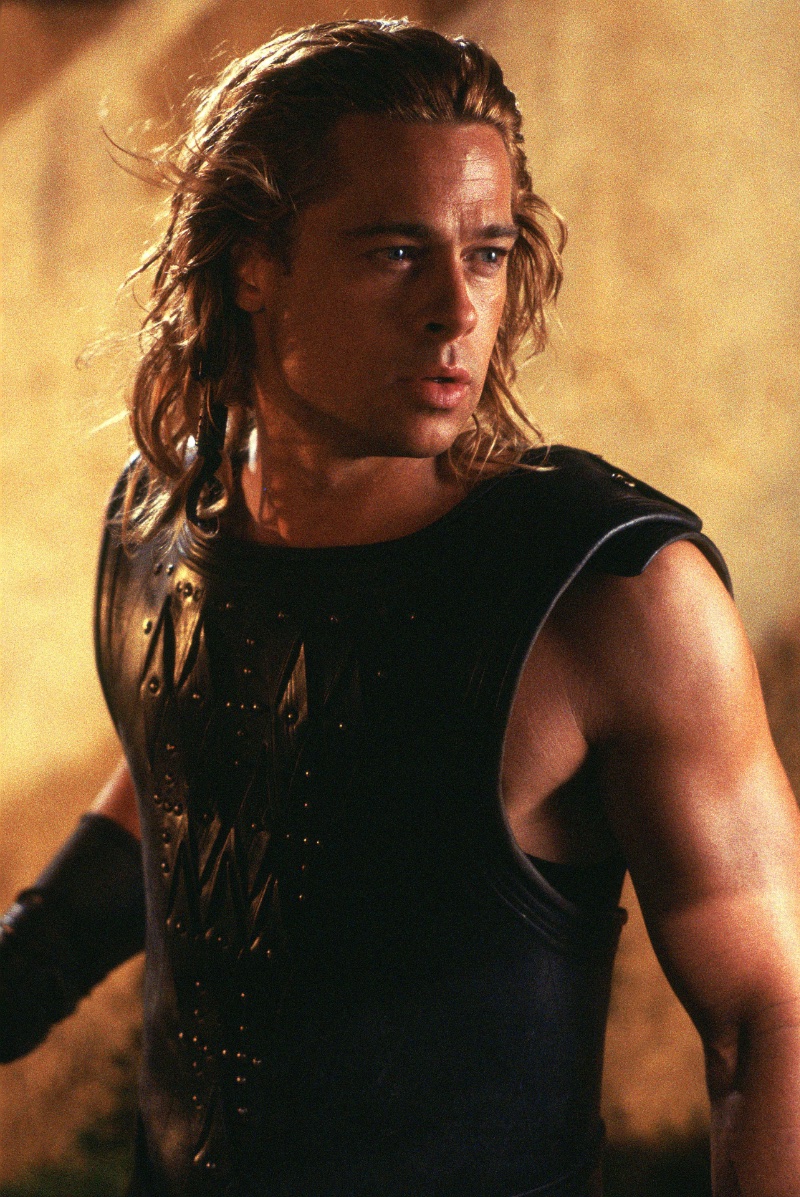
Fast forward to 2004’s Troy, where Pitt embodied the legendary Greek hero, Achilles. His hair also underwent a remarkable transformation, with a physique sculpted for the role. His long, sun-kissed locks cascaded past his shoulders, giving him a regal yet wild appearance, much like the famed warrior who was both revered and feared.
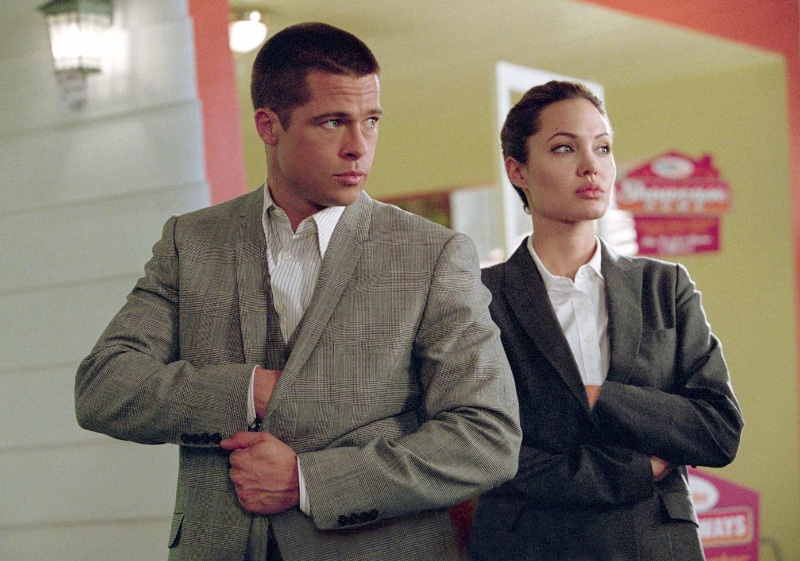
In 2005’s Mr. & Mrs. Smith, Brad Pitt showcased a distinctively sharp buzz cut as he portrayed John Smith, a covert assassin with a double life. This no-nonsense, minimalistic, yet sharply defined haircut resonated perfectly with his character’s efficient, straight-to-the-point demeanor.
The practical and sleek buzz cut hinted at the duality of a man who can seamlessly shift from suburban pretenses to lethal precision. Beyond its action-packed sequences, the film also stands out as the backdrop that ignited the real-life romance between Brad Pitt and Angelina Jolie, leading them eventually down the aisle.
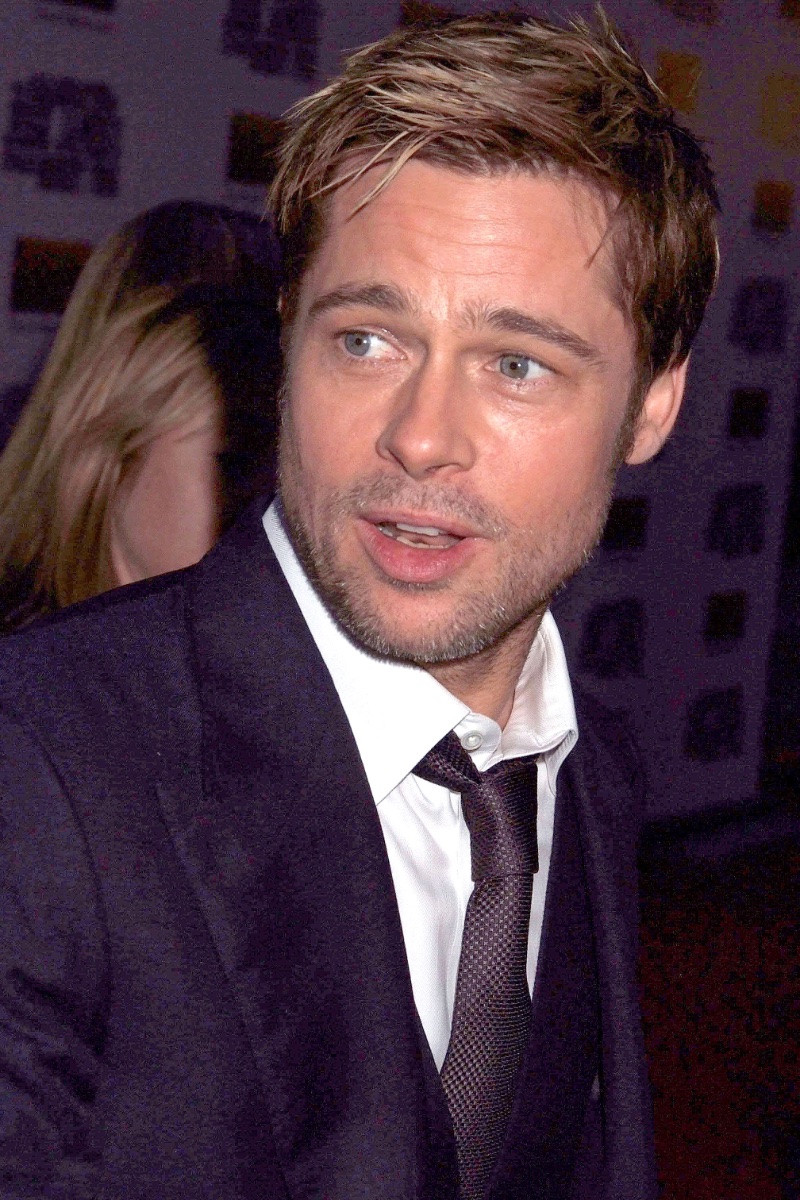
Then came 2008’s The Curious Case of Benjamin Button, where Pitt played the titular character who ages backward. His hair played a pivotal role in showcasing this reverse aging process. Beginning with thinning, white hair that characterized the elderly Benjamin, it transitioned to darker, fuller locks as the character grew younger, reflecting the unique passage of time experienced by Button.
Each hairstyle was not just a stylistic choice but served as an extension of the character, enhancing the narrative and deepening the audience’s connection to the story. Brad Pitt’s ability to transform for roles, coupled with the skill of his hairstylists, ensures his hair remains a significant, ever-evolving part of his cinematic journey.
Brad Pitt’s Inglourious Hair
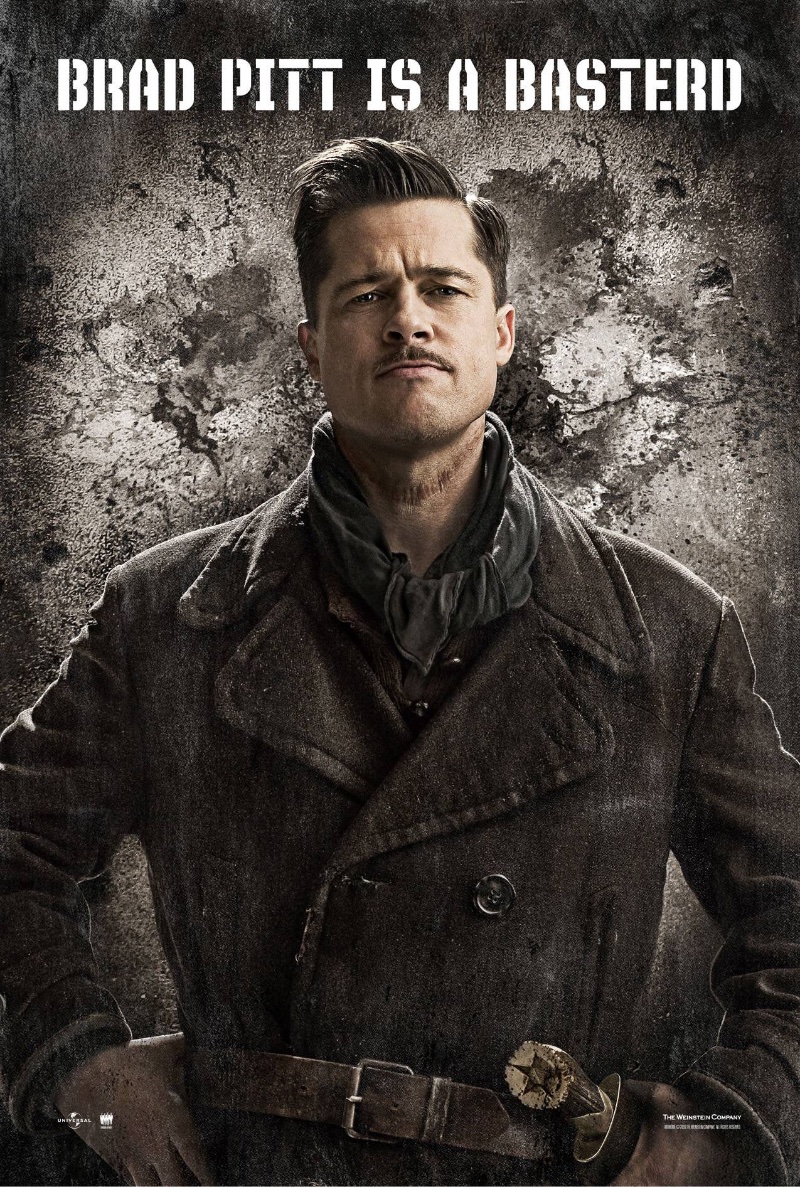
In Quentin Tarantino’s 2009 film Inglourious Basterds, Brad Pitt donned a hairstyle as unique as the film—an undercut with a side part and a long combover. This distinct haircut captured the persona of Lt. Aldo Raine, the relentless Nazi hunter he portrayed.
The hairstyle in Inglourious Basterds was more than just a visual element; it was a character statement. The slicked-back, high-gloss hairstyle added an extra layer of intensity to Lt. Aldo Raine, making him intriguing and formidable.
The hair was as much a part of Raine’s identity as his Southern drawl and unyielding resolve. The public’s reaction to this look was immediate and palpable.
With the haircut becoming known as the Lt. Aldo Raine, it became a talking point, sparking debates and discussions in both fashion circles and among film enthusiasts. Some saw it as a nod to classic war films, while others viewed it as a modern twist on vintage style.
Either way, the hairstyle became one of the film’s most memorable aspects, adding to the long list of iconic looks that Brad Pitt has given the world.
The Apocalyptic Mane: World War Z
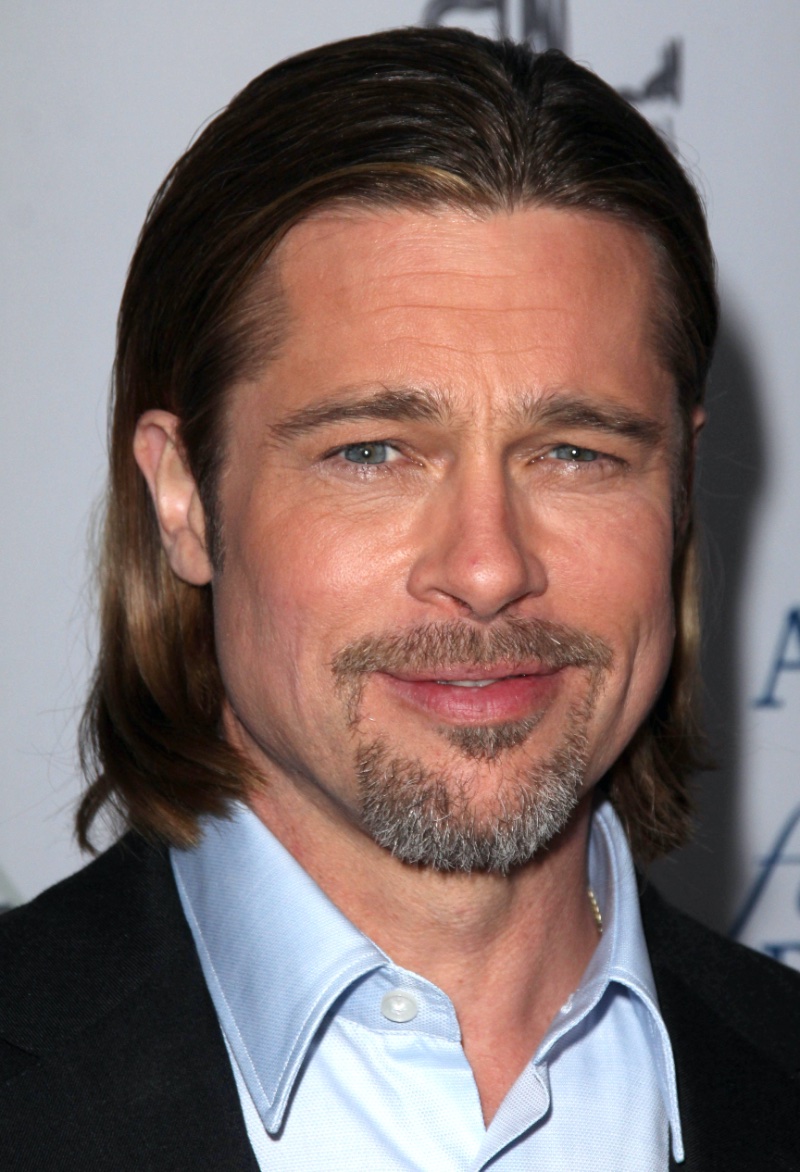
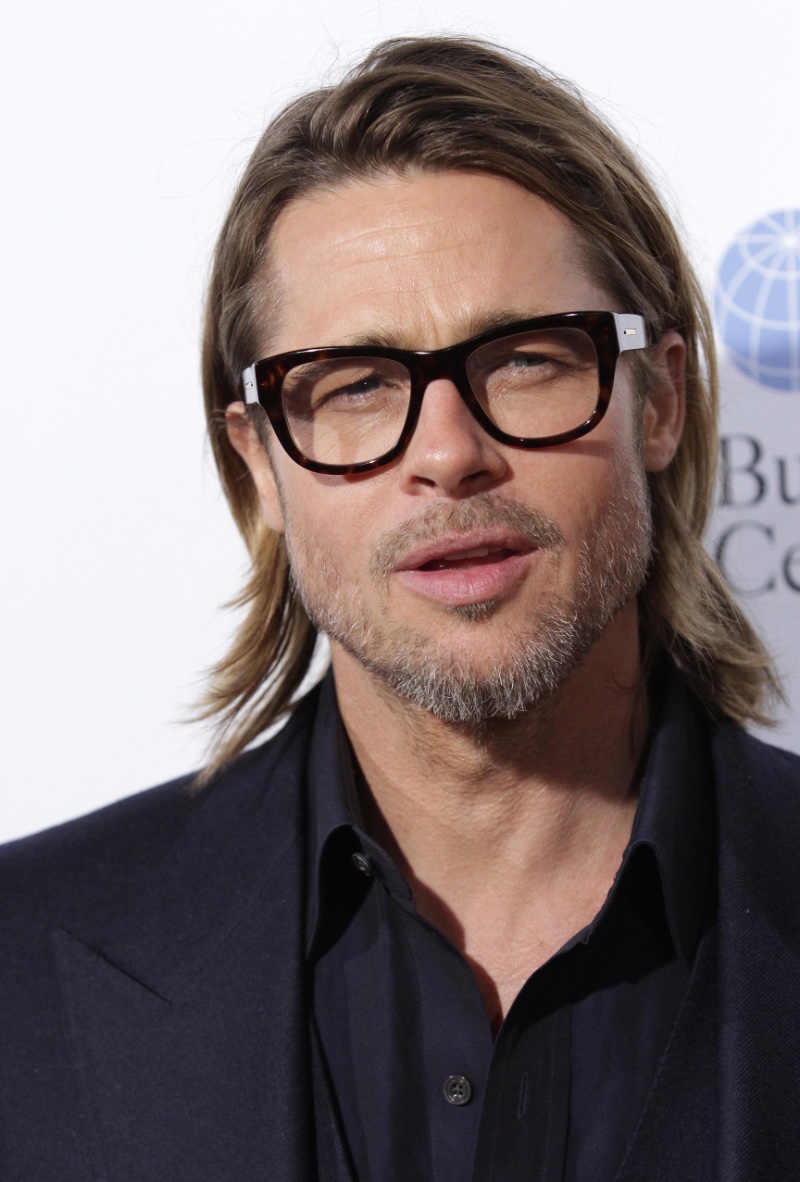
In 2013’s World War Z, Brad Pitt took on the role of Gerry Lane, a former United Nations investigator navigating a world overrun by zombies. While the film’s focus was undoubtedly on the gripping narrative of a global pandemic, Pitt’s hairstyle still managed to draw attention.
Sporting a slightly longer-than-usual, tousled mane that reached just past his ears, it was a hairstyle that balanced practicality with the rugged aesthetics suitable for a post-apocalyptic setting.
The War Hero: Brad Pitt’s Fury Haircut
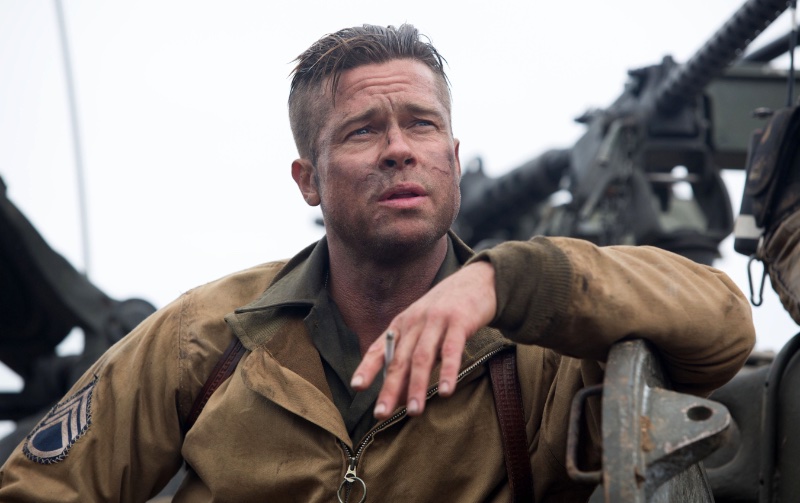
When Brad Pitt starred in 2014’s Fury, a war drama set in the waning days of World War II, he took on the role of Don ‘Wardaddy’ Collier, a battle-hardened tank commander leading his crew behind enemy lines. Reflecting the intensity of his character and the gritty backdrop of the film, Pitt’s hairstyle evolved into a uniquely rugged design.
Pitt’s cut, a military-inspired variation of the disconnected undercut, was characterized by a high fade with a pronounced longer top. It was undoubtedly distinctive and exuded the commanding presence of a seasoned war leader.
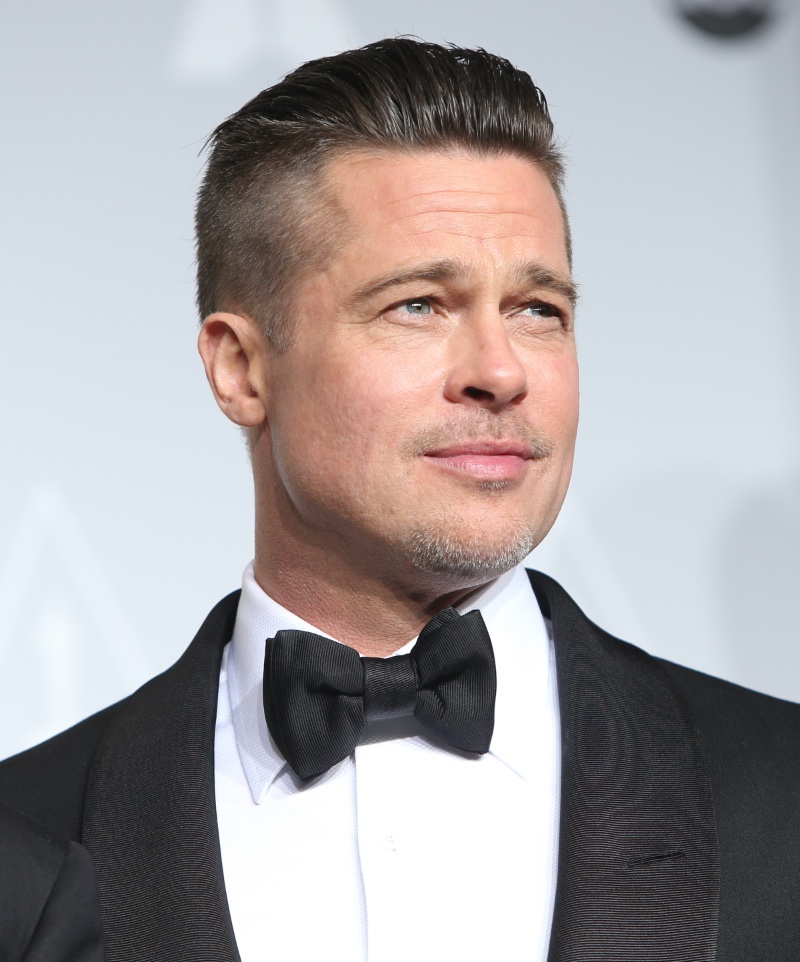
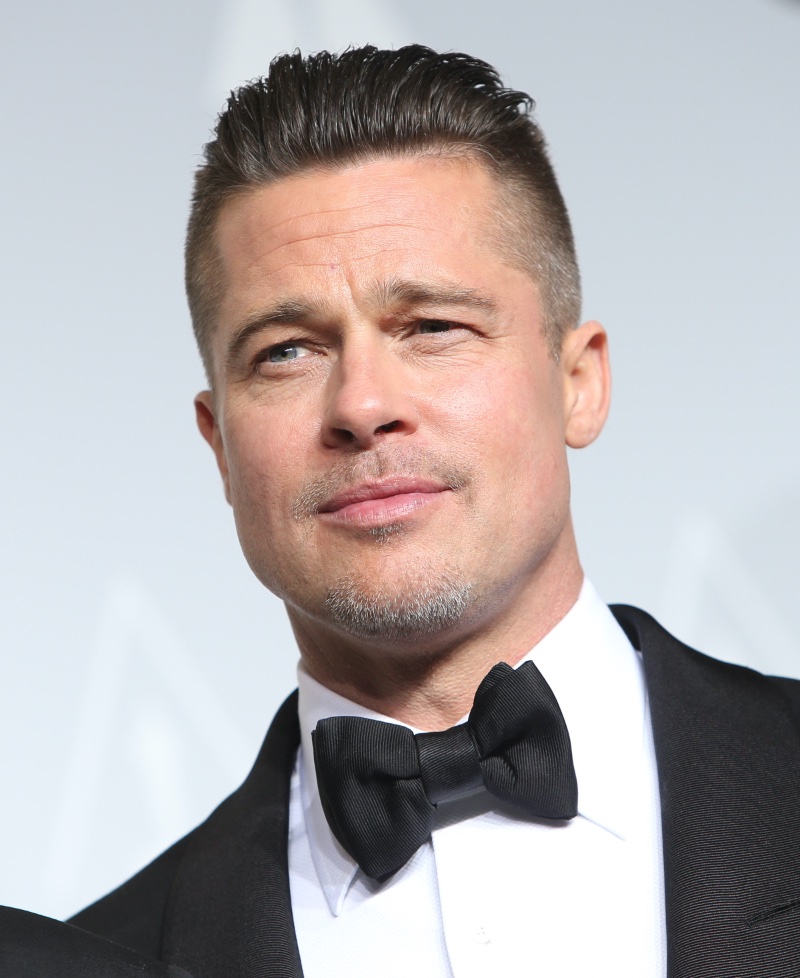
This Fury hairstyle moved beyond the silver screen, influencing men’s grooming trends. Many were captivated by its fusion of audacity and vintage charm.
Barber shops across the globe started to report a spike in requests for the high fade with an extended top. The Fury haircut not only defined a cinematic character but also set a precedent in men’s fashion, emphasizing once more that Brad Pitt’s style influence is as impactful as his film roles.
The Chameleon: The Big Short & OUATIH
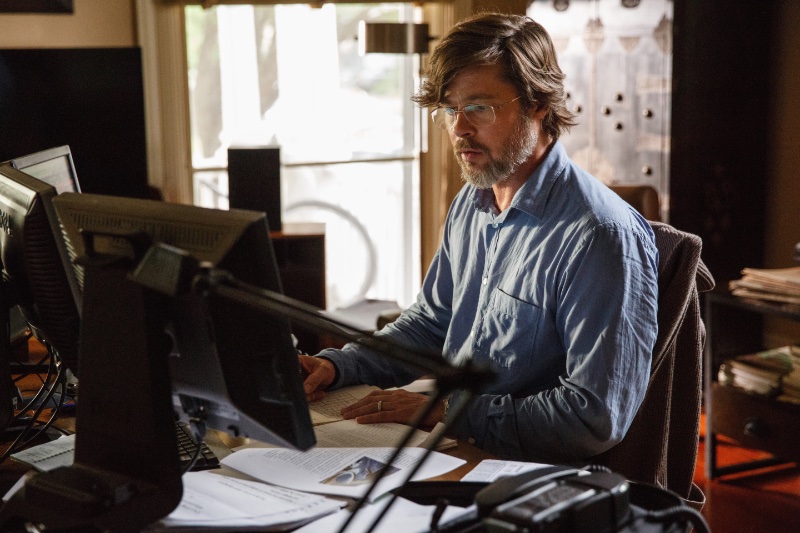
In the transformative world of film, Brad Pitt has showcased an uncanny ability to disappear into his characters, and his hairstyles have often played a pivotal role in these transitions. In 2015’s The Big Short, a film diving deep into the financial crisis of 2007-2008, Pitt portrayed Ben Rickert, a reclusive former trader.
Pitt’s hair in this role, medium-length, noticeably graying, and somewhat messy, mirrored the character’s disengagement from the chaotic world of high-stakes finance. The laid-back style, combined with a beard, gave him an almost scholarly appearance, reflecting a man disillusioned with the system and seeking a life of simplicity away from Wall Street’s hustle.
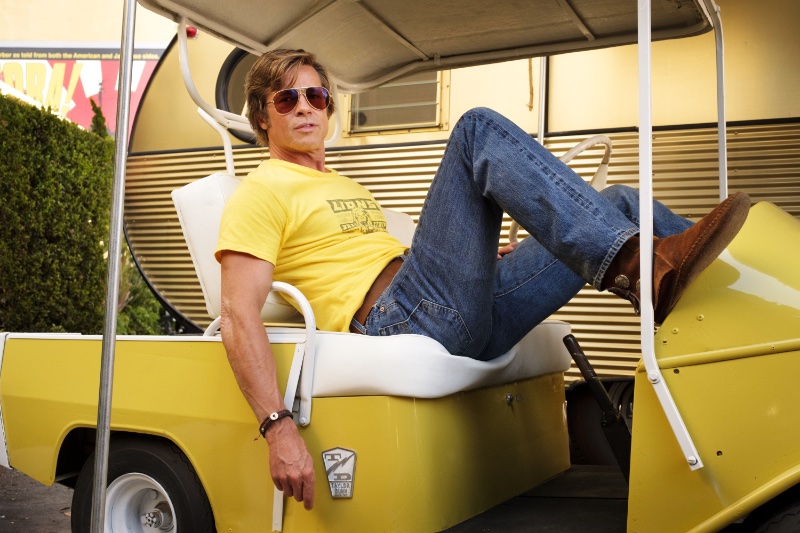
Fast forward to 2019, in Quentin Tarantino’s nostalgic Hollywood tale, Once Upon a Time in Hollywood, Pitt played Cliff Booth, a stunt double navigating the challenges and changes of 1969 Los Angeles. Here, he sported a golden, tousled, scissor-cut hairstyle reminiscent of the era’s carefree vibes.
This sun-kissed look effortlessly slicked back and exuded the cool, relaxed demeanor of a man intimately familiar with Hollywood’s highs and lows. Both films highlighted Pitt’s adaptability and commitment to his roles, using his hair as a powerful tool to communicate the essence of his characters, from a retired trader’s reclusion to a stuntman’s breezy confidence.
Evolving Hair Aesthetics: The Lost City, Bullet Train & Babylon
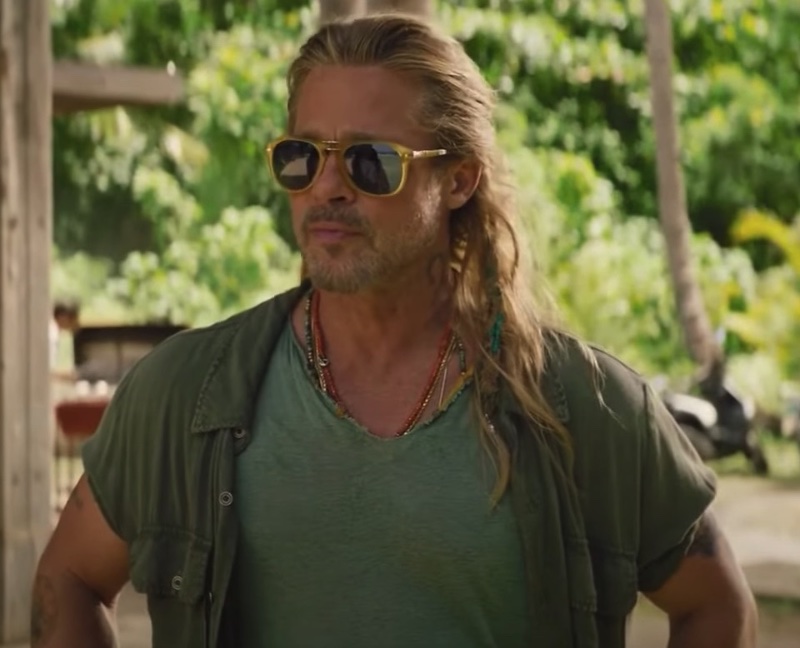
Brad Pitt has long demonstrated an innate ability to meld seamlessly into his roles, with his transformative hairstyles playing a pivotal role in shaping his on-screen personas.
In 2022’s The Lost City, Pitt plays an adventurer plunged into unexpected perils. His hairstyle—long, rugged, and reminiscent of his ’90s aesthetic—complements his character’s journey’s wild and untamed nature and serves as a nostalgic callback.
This look feels like a full-circle moment, capturing a sense of déjà vu for fans who’ve watched Pitt evolve over the decades, much like the recurring cycles of fashion trends.
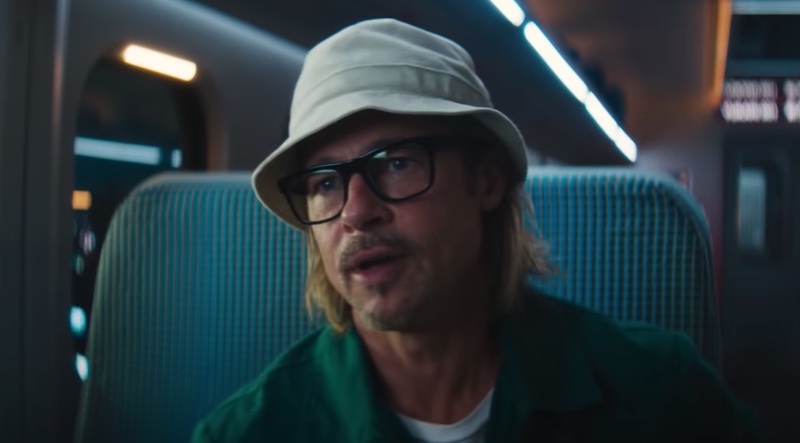
Moving to the intense backdrop of 2022’s Bullet Train, Pitt assumes the role of an assassin, enigmatic and shrouded in danger. His longer, medium-length hair, similar to his World War Z style, is contemporized, embodying the film’s blend of suspense and modern action.
Pitt’s hair, free-flowing yet restrained, mirrors his character’s duality—the tension between his profession’s demands and the personal complexities lurking beneath.
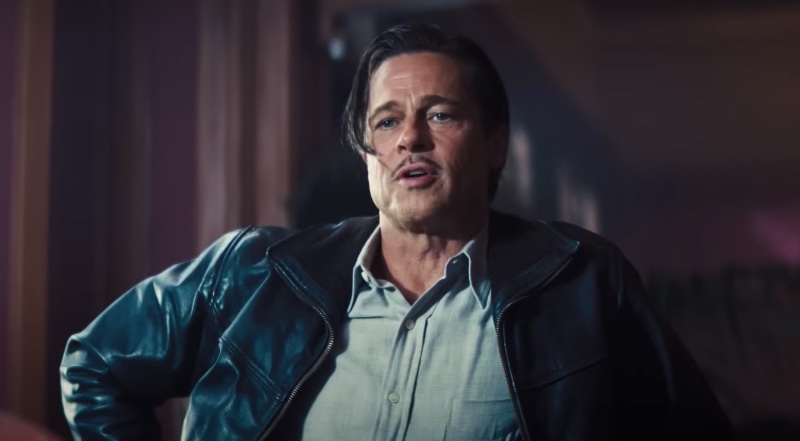
Finally, in 2022’s Babylon, Pitt immerses himself in the glitz and glamour of old Hollywood, portraying a character navigating the industry’s highs and lows. His hair slicked back sleekly, reminiscent of the 1920s and 30s Hollywood leading men.
This style choice adds a modern twist, mirroring the film’s approach to revisiting history with fresh eyes. The polished look seamlessly connects with the character’s journey through a world of allure and ambition.
The Role of Facial Hair
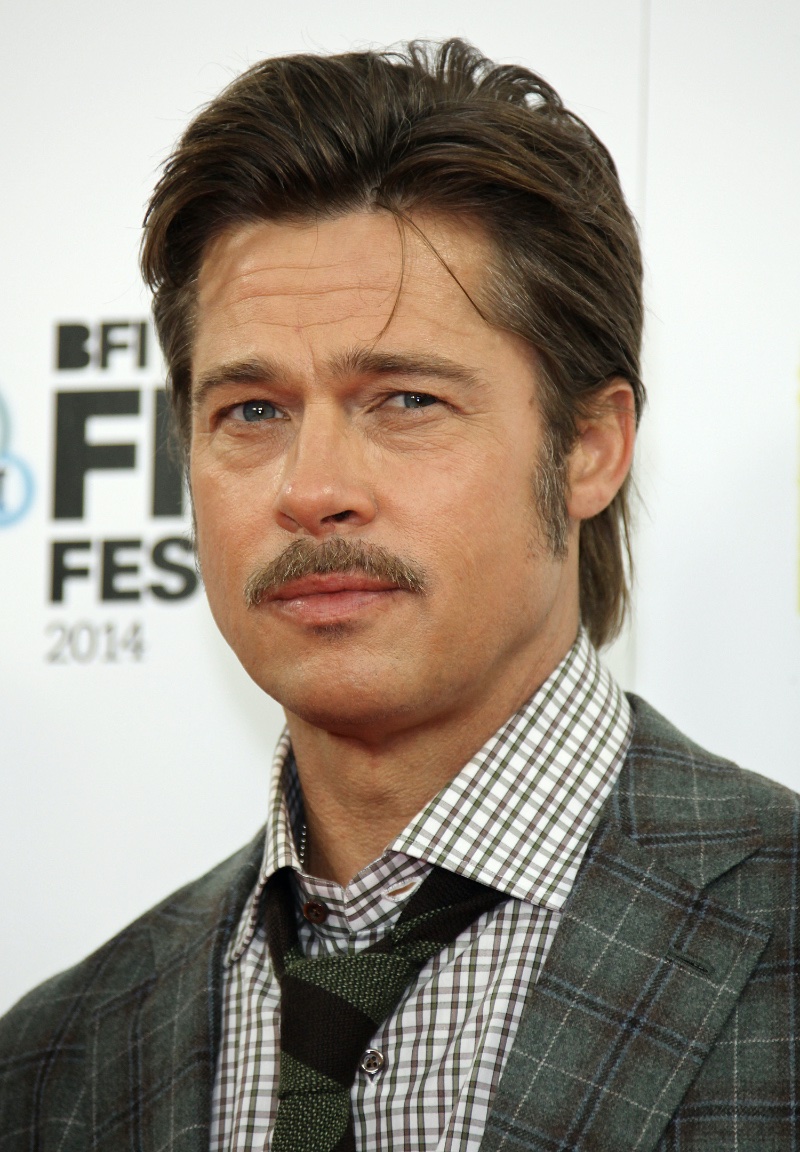
Brad Pitt’s hair transformations have always captured significant attention, but an equally intriguing aspect of his ever-evolving looks lies further down: his facial hair.
Over the years, Pitt’s choices in facial hair—be it the fullness of a beard, the ruggedness of a scruff, or the sleekness of a clean shave—have played an instrumental role in accentuating his on-screen personas and lending depth to his characters.
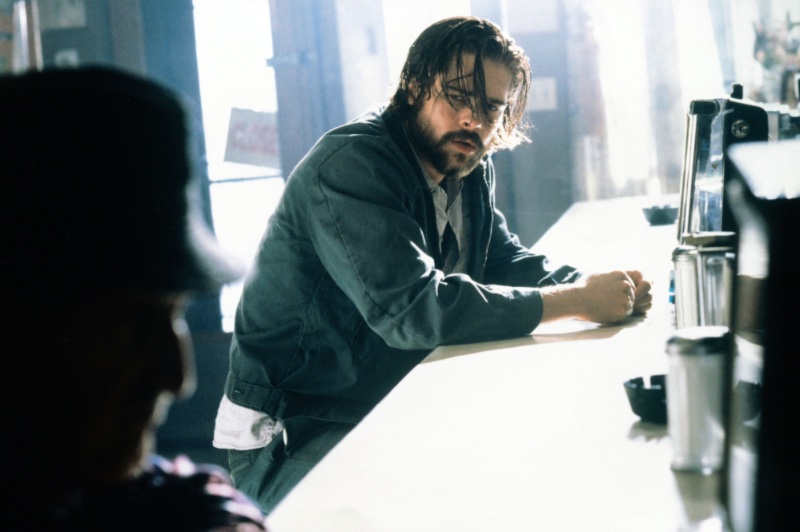
In movies like Kalifornia, a rugged beard heightened the raw, primal aura of Pitt’s character, enhancing the role’s gravitas. On the other hand, his clean-shaven appearance in Meet Joe Black exuded an air of sophistication.
Such choices provide a layer of character development, subtly shaping audience perceptions. Whether framing his jawline or highlighting his cheekbones, Brad Pitt’s facial hair choices have consistently reinforced the notion that sometimes, the subtlest details leave the most significant impact.
Red Carpet Looks: A Glimpse into Brad Pitt’s Style
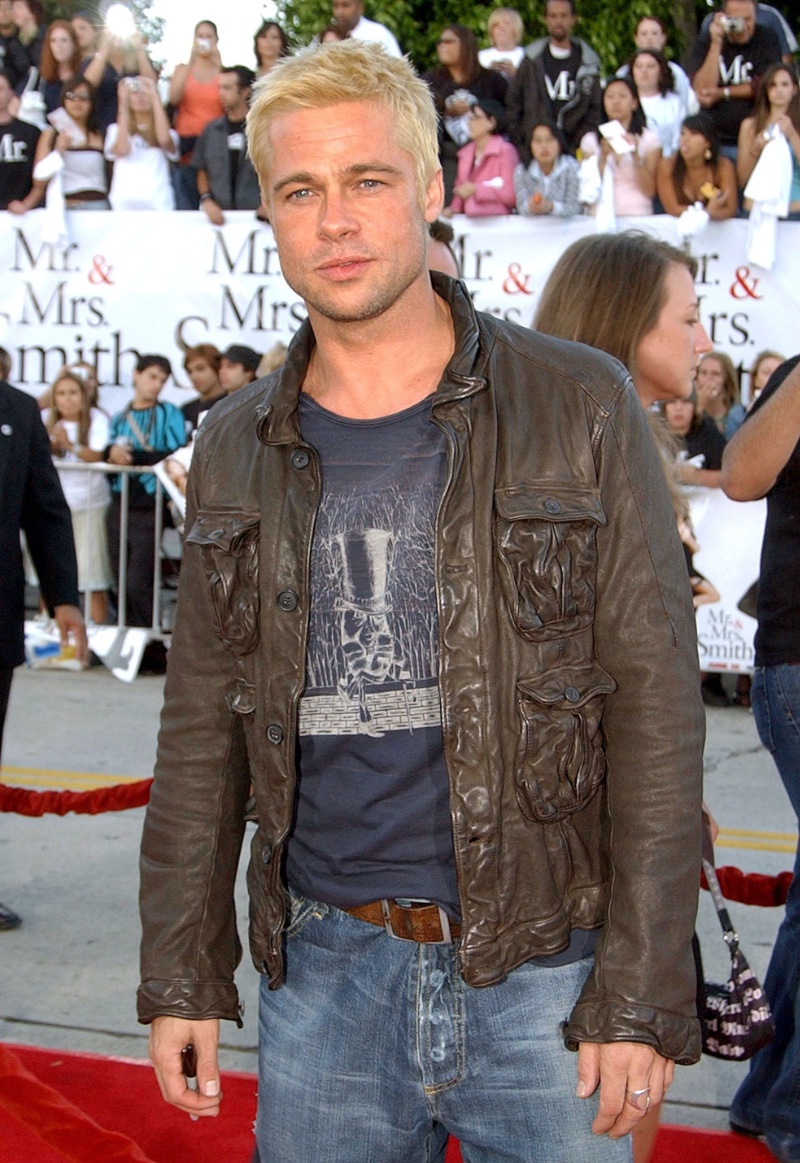
While Brad Pitt’s cinematic transformations are always a discussion topic, his off-screen sartorial prowess truly captivates during star-studded events. A fearless approach to style is at the heart of every red carpet appearance.
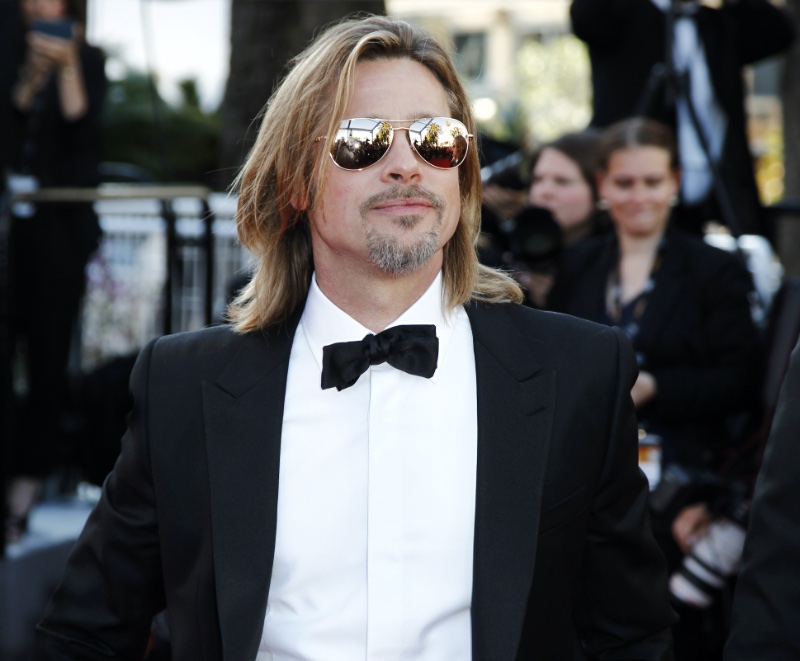
Whether gracing the Cannes Film Festival or entering the Oscars, Pitt effortlessly blends the classic with the contemporary. His penchant for accessorizing elevates every ensemble, be it through strategically chosen jewelry, a dapper hat, or statement-making sunglasses.
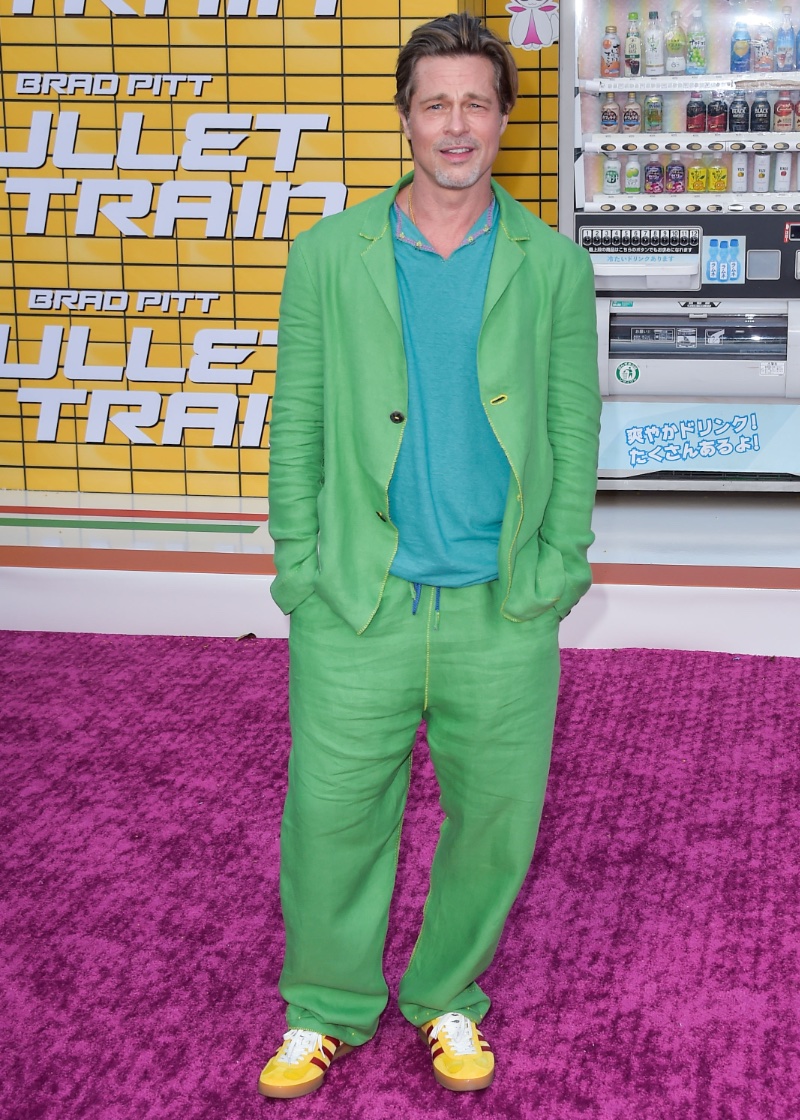
Though he can impeccably don a classic tuxedo, embracing the very essence of Hollywood glam, he’s equally at ease slipping into modern trends—think a sleek leather coat or a vibrant, relaxed-fit suit. This duality in style choices reveals a man rooted in timeless elegance and enthusiastic about ever-evolving fashion.
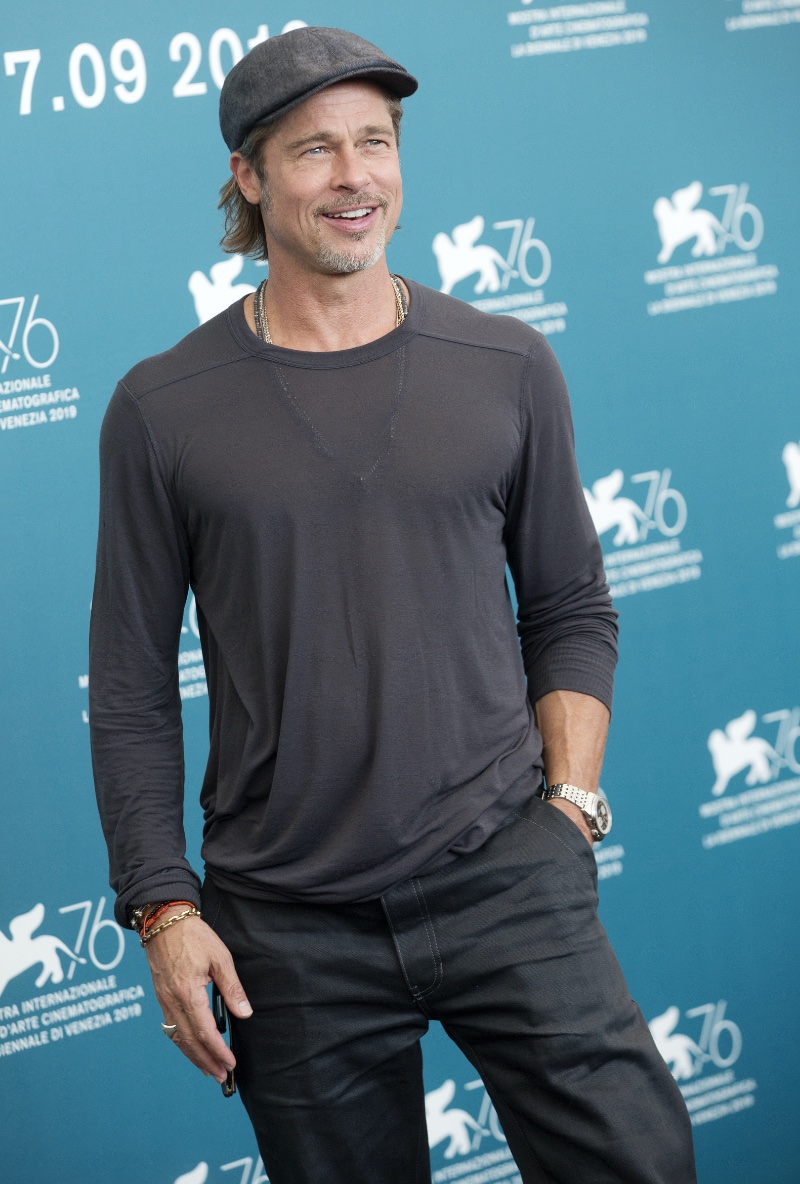
Brad Pitt’s Hair Legacy
Brad Pitt’s illustrious career, spanning decades in Hollywood, is accompanied by a visual timeline of hairstyles that, in many ways, have defined eras, influenced global trends, and punctuated his cinematic milestones. From the wild tresses of his early years to the sculpted looks of blockbuster hits, each hairstyle accentuates his roles and mirrors the evolution of male grooming.
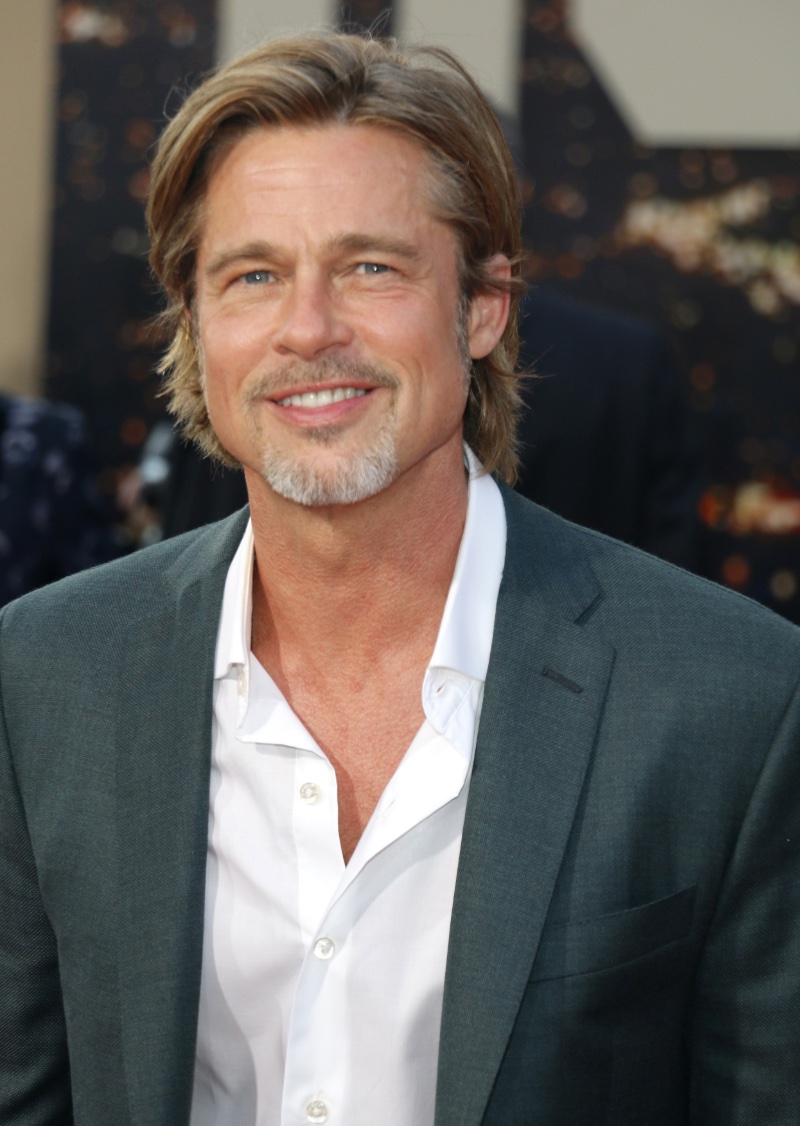
Pitt’s different hairstyles are chapters in a narrative of artistic exploration, transformation, and personal growth. As audiences, we’ve been privileged to witness the seamless interplay of character and coif, observing how each haircut or transformation amplifies a persona on screen.
But beyond that, Brad Pitt’s hair odyssey is a testament to his unwavering commitment to his craft and his fearlessness in embracing change. In a world where the image is pivotal, Pitt’s hair evolution is an iconic journey—reflecting the star’s innate ability to mold, adapt, and redefine style standards in Hollywood and beyond.

